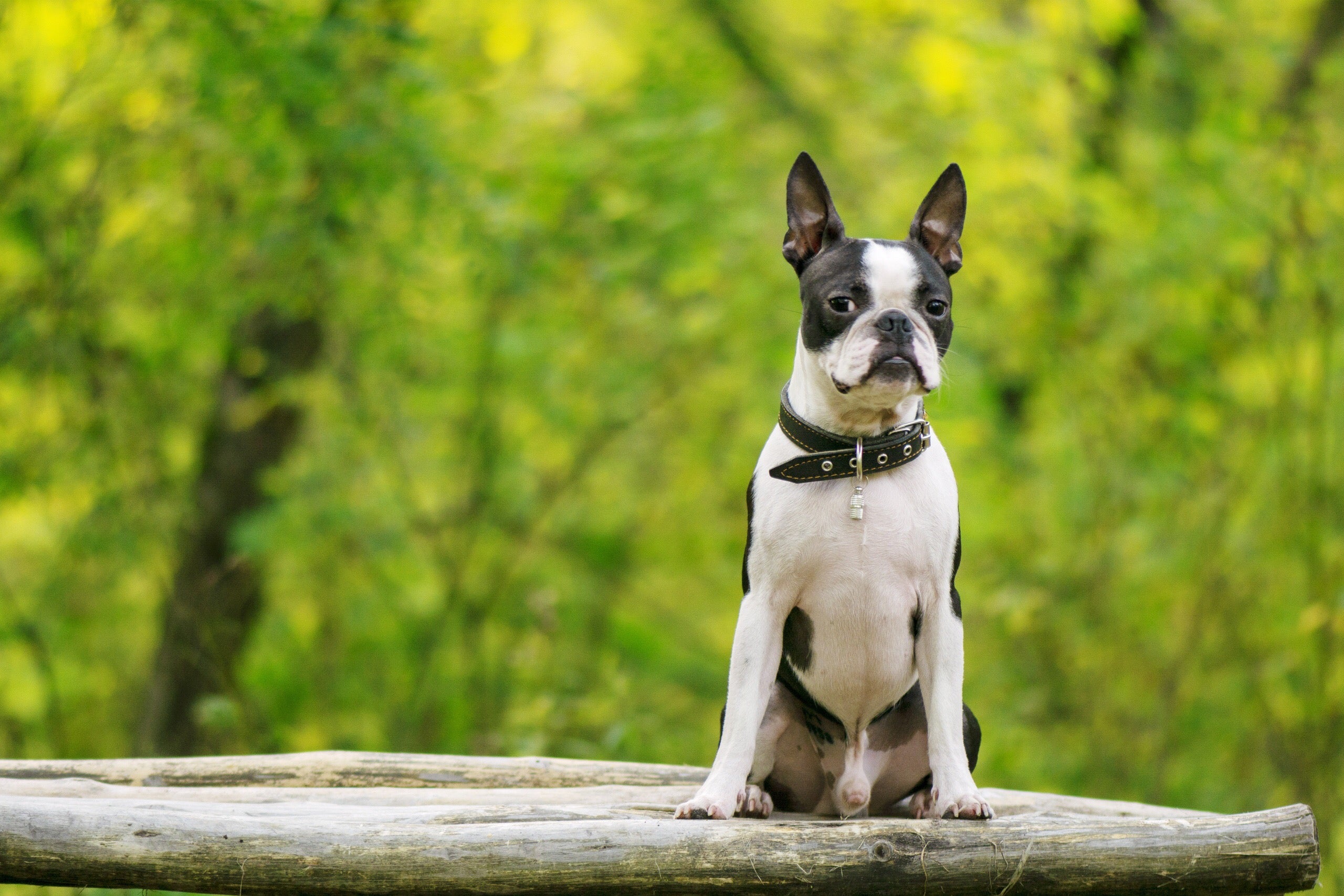Boston Terrier
This tiny but mighty dog is characterized by a tight, compact body and signature snug tuxedo-jacket-like markings, making them one of the most naturally stylish breeds. They have a square head, short muzzle, erect ears, and large, round eyes that glow with kindness and curiosity. Boston Terriers are sturdy, portable, and move with a noticeable pep in their step.
Breed characteristics carousel
Learn More
Need to Know
- Great dog for non-experienced owners
- Basic training required
- Enjoys light walks
- Can be left alone occasionally with training
- Small dog
- Some drool
- Requires regular grooming
- Quiet dog, but barks at and alerts to visitors/anything unusual
- Gets along well with other pets
- Needs a small yard
- May need additional supervision to live with children
- Can happily live in the city
- AKC Registered Breed

Personality
Nicknamed “The American Gentleman” for their impeccable manners, Bostons are lively, happy dogs that love to be around humans. They enjoy shadowing their owners and will always want to get in on the fun happening around them. Outgoing, social, and very affectionate, these pups are always eager to be loved on and for some mid-day cuddles.
This breed is clever, determined, and very adaptable to training. They live to chase balls and can often get so excited by playing fetch with their humans that they get the “zoomies.” They take their play time very seriously and can get a little boisterous and strong-willed—sometimes needing to take breaks to help them not get overstimulated.
Even though they have Terrier in their name, Bostons do not fit a typical Terrier personality and avoid a lot of mischief the breed classification is commonly associated with.
Around 1865, a coachman in Boston developed a mix between an English Terrier and a Bulldog that provided the foundation for the Boston Terrier. By 1889, the breed had become sufficiently popular in the area and was named the Boston Terrier after its birthplace. The handsome little Boston Terrier quickly gained favor throughout America, ranking as one of the most popular breeds in the early to middle 1900s, and still maintains great popularity today.
The Boston is perfect for a first-time dog owner. They are a fun-loving companion who enjoys training and following an owner around who is home most of the day.
For some Boston Terriers, a brisk walk once or twice a day will be enough. Others will need more time to run and play. Simply letting a Boston out into the yard doesn't count as exercise—they’ll probably just sit at the door waiting to be let back in. Playing fetch and agility exercises are enjoyable ways for Bostons to expend energy, especially when it is quality time with their owners.
Boston Terriers make great dogs for urban living as they can live in a small space as long as they have access to the outdoors for exercising and using the bathroom.
The Boston's sleek, fine coat does shed a little. Weekly brushing with a soft-bristle brush or rubber grooming mitt will help remove loose hair. This also promotes new hair growth and distributes skin oils throughout the coat to help keep it healthy and shiny. Boston Terriers need to be bathed only occasionally, and their nails should be trimmed regularly.
Socialization will help Boston Terriers develop into well-adjusted, well-mannered dogs. They respond well to positive reinforcement as they are often quite sensitive. Gentle corrections should be followed by warmth, praise, and treats.
Boston Terriers are friendly, social, and eager to get in on the action taking place around them. They make great family pets as they thrive on social interaction with humans.
The cost of a Boston Terrier from a breeder is significantly more than the cost of adopting one from a local shelter or rescue. The adoption fee usually covers additional items such as spaying or neutering, vaccines, and microchipping.

Learn more about feeding and caring for your Boston Terrier on Purina.
Did You Know?
- A dog clairvoyant Boston Terrier named Missie stunned her owner and experts alike by predicting the results of sports events, the next US president, the sex and weight of babies, and even the date and time of her own death. She could also tell people’s ph
- Helen Keller had a Boston Terrier named “Phiz.”
- Get your earplugs ready—these dogs can be big snorers because of the size and shape of their muzzles.

